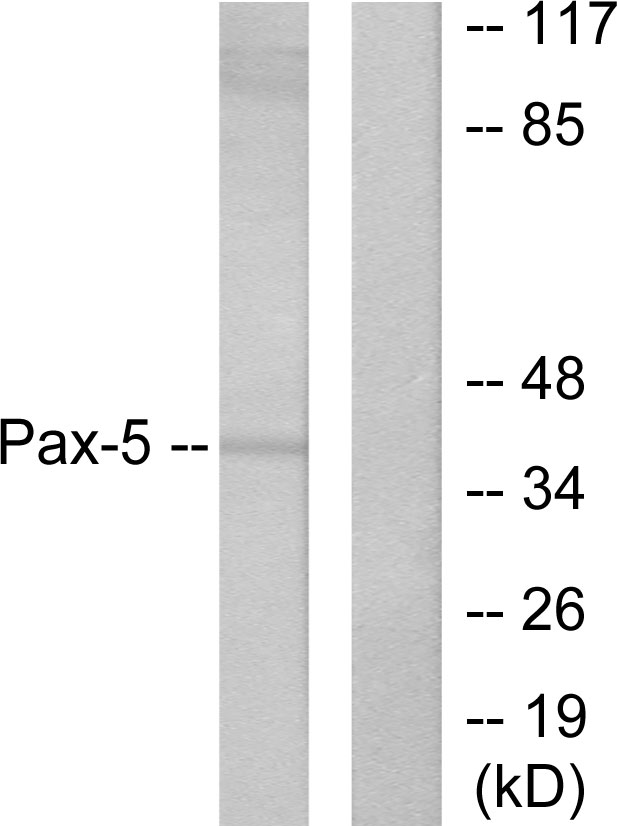![IHC-P analysis of human tonsil tissue using GTX01923 PAX5 antibody [1EW]. Note nuclear staining of B cells. IHC-P analysis of human tonsil tissue using GTX01923 PAX5 antibody [1EW]. Note nuclear staining of B cells.](https://www.genetex.com/upload/website/prouct_img/normal/GTX01923/GTX01923_20200811_IHC-P_14_w_23053121_238.webp)
IHC-P analysis of human tonsil tissue using GTX01923 PAX5 antibody [1EW]. Note nuclear staining of B cells.
PAX5 antibody [1EW]
GTX01923
ApplicationsImmunoHistoChemistry, ImmunoHistoChemistry Paraffin
Product group Antibodies
ReactivityHuman
TargetPAX5
Overview
- SupplierGeneTex
- Product NamePAX5 antibody [1EW]
- Delivery Days Customer9
- Application Supplier NoteIHC-P: 1:100. *Optimal dilutions/concentrations should be determined by the researcher.Not tested in other applications.
- ApplicationsImmunoHistoChemistry, ImmunoHistoChemistry Paraffin
- CertificationResearch Use Only
- ClonalityMonoclonal
- Clone ID1EW
- ConjugateUnconjugated
- Gene ID5079
- Target namePAX5
- Target descriptionpaired box 5
- Target synonymsALL3, BSAP, PAX-5, paired box protein Pax-5, B-cell lineage specific activator, paired box homeotic gene 5, paired domain gene 5, transcription factor PAX 5
- HostMouse
- IsotypeIgG1
- Protein IDQ02548
- Protein NamePaired box protein Pax-5
- Scientific DescriptionThis gene encodes a member of the paired box (PAX) family of transcription factors. The central feature of this gene family is a novel, highly conserved DNA-binding motif, known as the paired box. Paired box transcription factors are important regulators in early development, and alterations in the expression of their genes are thought to contribute to neoplastic transformation. This gene encodes the B-cell lineage specific activator protein that is expressed at early, but not late stages of B-cell differentiation. Its expression has also been detected in developing CNS and testis and so the encoded protein may also play a role in neural development and spermatogenesis. This gene is located at 9p13, which is involved in t(9;14)(p13;q32) translocations recurring in small lymphocytic lymphomas of the plasmacytoid subtype, and in derived large-cell lymphomas. This translocation brings the potent E-mu enhancer of the IgH gene into close proximity of the PAX5 promoter, suggesting that the deregulation of transcription of this gene contributes to the pathogenesis of these lymphomas. Alternative splicing results in multiple transcript variants encoding different isoforms. [provided by RefSeq, Jul 2013]
- ReactivityHuman
- Storage Instruction2°C to 8°C
- UNSPSC12352203




